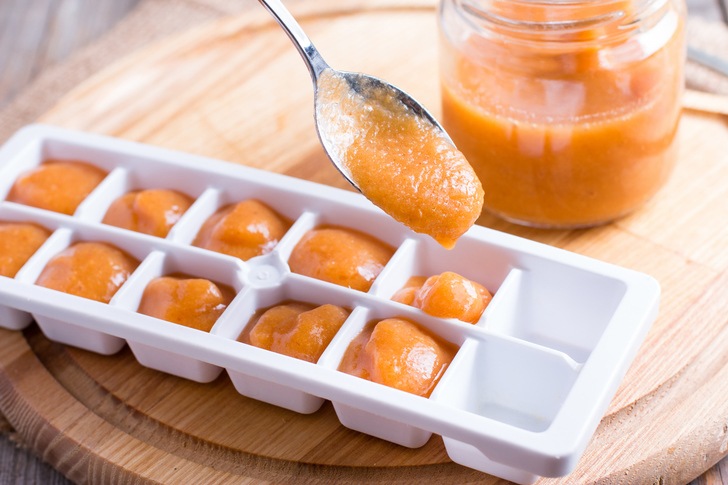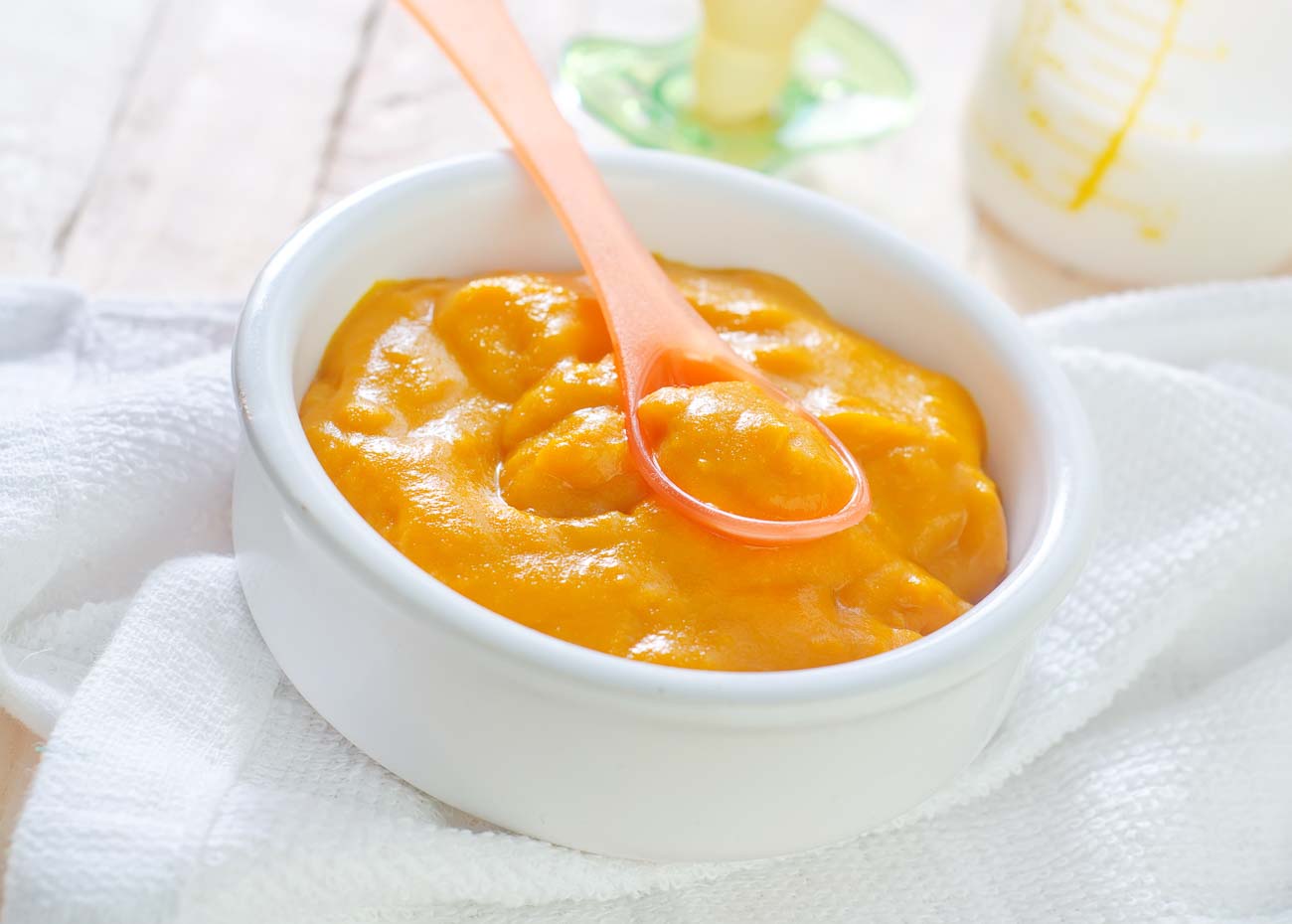Child meals recipes type the cornerstone of a wholesome and balanced food plan for infants and toddlers, offering important vitamins and setting the inspiration for lifelong consuming habits. This complete information delves into the intricacies of making scrumptious, nutritious, and age-appropriate child meals recipes, empowering mother and father and caregivers with the information and expertise to nourish their little ones.
From understanding dietary concerns to exploring varied cooking strategies, this information covers all elements of child meals preparation, making certain that each meal is a healthful and pleasurable expertise for each the newborn and the caregiver.
Dietary Issues for Child Meals Recipes
Making certain optimum vitamin is paramount for infants and toddlers as they endure speedy development and growth. Child meals recipes ought to prioritize the availability of important vitamins to assist their evolving wants.
Important Vitamins for Infants and Toddlers
Infants and toddlers require a balanced consumption of macronutrients (carbohydrates, protein, and fats) and micronutrients (nutritional vitamins and minerals). Key vitamins embody:
- Carbohydrates:Present vitality and fiber for digestive well being.
- Protein:Important for constructing and repairing tissues, enzymes, and hormones.
- Fats:Supplies vitality, helps mind growth, and aids in vitamin absorption.
- Nutritional vitamins:Important for varied bodily features, similar to development, imaginative and prescient, and immunity.
- Minerals:Essential for bone growth, muscle operate, and fluid steadiness.
Balanced Meals and Portion Sizes
Balanced meals present quite a lot of nutrient-rich meals from all meals teams. Age-appropriate portion sizes are important to forestall overfeeding or undernourishment.
Making certain Ample Consumption of Fruits, Greens, and Entire Grains
Fruits, greens, and entire grains are nutrient-dense meals that assist development and total well-being. Ideas for making certain enough consumption embody:
- Selection:Supply a variety of fruit and veggies to reveal infants and toddlers to totally different flavors and vitamins.
- Colour:Select produce from totally different colour teams to make sure a various vary of nutritional vitamins and minerals.
- Entire grains:Introduce entire grains regularly, beginning with fortified cereals or oatmeal, to supply fiber and important vitamins.
Varieties of Child Meals Recipes
Child meals recipes could be categorized primarily based on the age and developmental stage of the newborn. Every sort of recipe provides totally different advantages and downsides, and it is essential to decide on the appropriate sort of recipe to your child’s particular person wants.
Purees
Purees are an effective way to introduce new meals to your child. They’re simple to digest and could be constituted of quite a lot of fruits, greens, and meats. Purees are usually beneficial for infants 4-6 months outdated. Advantages of purees:* Straightforward to digest
- Will be constituted of quite a lot of meals
- Will help introduce new meals to your child
- Will be frozen for later use
Drawbacks of purees:* Will be messy
- Is probably not as nutrient-rich as different forms of child meals
- Will be boring for older infants
Mashes
Mashes are a superb choice for infants who’re beginning to develop their pincer grasp. They’re barely thicker than purees and could be constituted of quite a lot of meals, together with fruits, greens, and meats. Mashes are usually beneficial for infants 6-8 months outdated.
Advantages of mashes:* Helps develop pincer grasp
- Will be constituted of quite a lot of meals
- Will be extra nutrient-rich than purees
- Will be much less messy than purees
Drawbacks of mashes:* Could also be too thick for some infants
Will be tough to feed to infants who aren’t but sitting up
Finger meals
Finger meals are an effective way for infants to follow self-feeding. They’re usually small, comfortable items of meals that infants can simply choose up and eat. Finger meals are usually beneficial for infants 8-10 months outdated. Advantages of finger meals:* Helps develop high-quality motor expertise
- Permits infants to follow self-feeding
- Is usually a enjoyable and interactive strategy to feed your child
- Is usually a good strategy to introduce new meals to your child
Drawbacks of finger meals:* Will be messy
- Is probably not appropriate for all infants
- Is usually a choking hazard if not lower into small items
Toddler meals
Toddler meals are designed for infants who’re over 1 12 months outdated. They’re usually extra advanced than purees, mashes, and finger meals, and might embody quite a lot of meals from all meals teams. Toddler meals ought to be comfortable and simple to chew, and ought to be lower into small items to forestall choking.
Advantages of toddler meals:* Supplies quite a lot of vitamins
- Helps develop chewing expertise
- Is usually a enjoyable and interactive strategy to feed your toddler
- Will help toddlers find out about totally different meals
Drawbacks of toddler meals:* Will be extra time-consuming to arrange
- Is probably not appropriate for all toddlers
- Is usually a choking hazard if not lower into small items
Components for Wholesome Child Meals Recipes
When making ready child meals, it’s important to make use of high-quality, healthful components that present important vitamins to your baby’s development and growth. Here is a complete checklist of beneficial components:
- Fruits:Apples, bananas, berries, avocados, mangoes, and peaches are wonderful sources of nutritional vitamins, minerals, and fiber.
- Greens:Candy potatoes, carrots, broccoli, peas, and spinach are wealthy in nutritional vitamins, minerals, and antioxidants.
- Meats:Lean meats similar to rooster, turkey, and fish present protein, iron, and zinc.
- Grains:Oatmeal, quinoa, and brown rice are good sources of fiber, carbohydrates, and important nutritional vitamins.
- Wholesome fat:Avocado, olive oil, and coconut oil present important fatty acids for mind growth.
Natural and Regionally Sourced Components
Selecting natural and regionally sourced components each time doable is beneficial. Natural produce is grown with out the usage of pesticides and herbicides, lowering the publicity of your child to dangerous chemical substances. Regionally sourced components are sometimes more energizing and have a smaller carbon footprint, supporting sustainable practices.
Cooking Strategies for Child Meals Recipes

When making ready child meals, deciding on acceptable cooking strategies is essential to protect vitamins, improve flavors, and make sure the security of your baby’s meals. This part explores varied cooking strategies appropriate for child meals recipes, discussing their benefits and drawbacks to information you in making knowledgeable selections.
Steaming
Steaming is a delicate cooking methodology that includes exposing meals to sizzling steam. It preserves vitamins successfully and prevents overcooking, leading to tender and flavorful outcomes.
- Benefits:Retains vitamins, preserves flavors, prevents overcooking.
- Disadvantages:Could require specialised tools (e.g., steamer).
Boiling
Boiling includes submerging meals in boiling water. It’s a versatile methodology that can be utilized to cook dinner quite a lot of components, together with greens, fruits, and meats.
- Benefits:Fast and simple, kills micro organism.
- Disadvantages:Can leach vitamins into the water, might end in overcooking.
Roasting
Roasting includes cooking meals in an oven at excessive temperatures. It caramelizes pure sugars, enhancing flavors and making a crispy texture.
- Benefits:Enhances flavors, creates crispy texture.
- Disadvantages:Could require longer cooking instances, can dry out meals if not monitored rigorously.
Pureeing
Pureeing is the method of mixing cooked meals till it reaches a easy, creamy consistency. It is a wonderful strategy to introduce new meals to infants and make them simpler to digest.
- Benefits:Makes meals simpler to digest, appropriate for introducing new meals.
- Disadvantages:Could alter the feel and taste of meals.
Recipe Group and Presentation

To make it simpler for fogeys and caregivers to search out the appropriate recipes for his or her child’s wants, it is important to have a well-organized and clearly offered construction for child meals recipes.
By organizing recipes into particular classes and offering clear directions and step-by-step guides, mother and father can rapidly and effortlessly discover and put together the right meal for his or her baby.
Classes for Completely different Varieties of Recipes
Creating designated classes for various kinds of child meals recipes helps mother and father simply establish the recipes that meet their child’s dietary wants and preferences. Some frequent classes embody:
- Purees: Clean, single-ingredient purees ultimate for introducing new meals to infants.
- Mashed Meals: Meals mashed with a fork or potato masher, offering a barely extra textured choice for infants.
- Finger Meals: Chunk-sized, comfortable meals that encourage self-feeding and develop high-quality motor expertise.
- Smoothies: Blended fruits, greens, and yogurt, offering a nutrient-rich and easy-to-consume choice.
- Soups and Stews: Heat and comforting meals that introduce infants to totally different flavors and textures.
Security Issues for Child Meals Recipes

Making certain the security of child meals is paramount for the well-being of infants. Potential allergens, choking hazards, and correct storage and dealing with strategies should be rigorously thought of.
Introducing new meals to infants requires a gradual method to observe for any hostile reactions.
Potential Allergens
- Frequent allergens in infants embody cow’s milk, eggs, peanuts, tree nuts, wheat, soy, fish, and shellfish.
- Introduce new meals one by one and observe for any indicators of allergic reactions, similar to rashes, hives, or digestive points.
- Seek the advice of a healthcare skilled if any allergic reactions happen.
Choking Hazards
- Keep away from meals which are onerous, sticky, or spherical, as they’ll pose a choking hazard for infants.
- Minimize meals into small, bite-sized items and supervise infants whereas they’re consuming.
- Meals like grapes, sizzling canine, nuts, and onerous candies ought to be prevented till the kid is older and has developed correct chewing expertise.
Storage and Dealing with
- Retailer home made child meals in hermetic containers within the fridge for as much as 3 days or within the freezer for as much as 3 months.
- Thaw frozen child meals within the fridge or underneath working water earlier than serving.
- Discard any uneaten child meals after feeding to forestall spoilage.
Introducing New Meals, Child meals recipes
- Begin by introducing single-ingredient purees and regularly enhance the number of meals because the toddler tolerates them.
- Wait 3-5 days between introducing new meals to observe for any reactions.
- If an allergic response happens, cease feeding the meals and seek the advice of a healthcare skilled.
Useful Solutions
What are the important vitamins for infants and toddlers?
Important vitamins for infants and toddlers embody carbohydrates, protein, fats, nutritional vitamins, and minerals. These vitamins are essential for development, growth, and total well-being.
How can I guarantee my child is getting sufficient fruit and veggies?
Supply quite a lot of fruit and veggies in several types, similar to purees, mashes, and finger meals. Encourage your child to self-feed as they develop into developmentally prepared.
What are some ideas for introducing new meals to my child?
Begin by introducing one new meals at a time and wait just a few days earlier than introducing one other. Observe your child for any indicators of allergic reactions or sensitivities. Regularly enhance the range and amount of meals as your child tolerates them.

